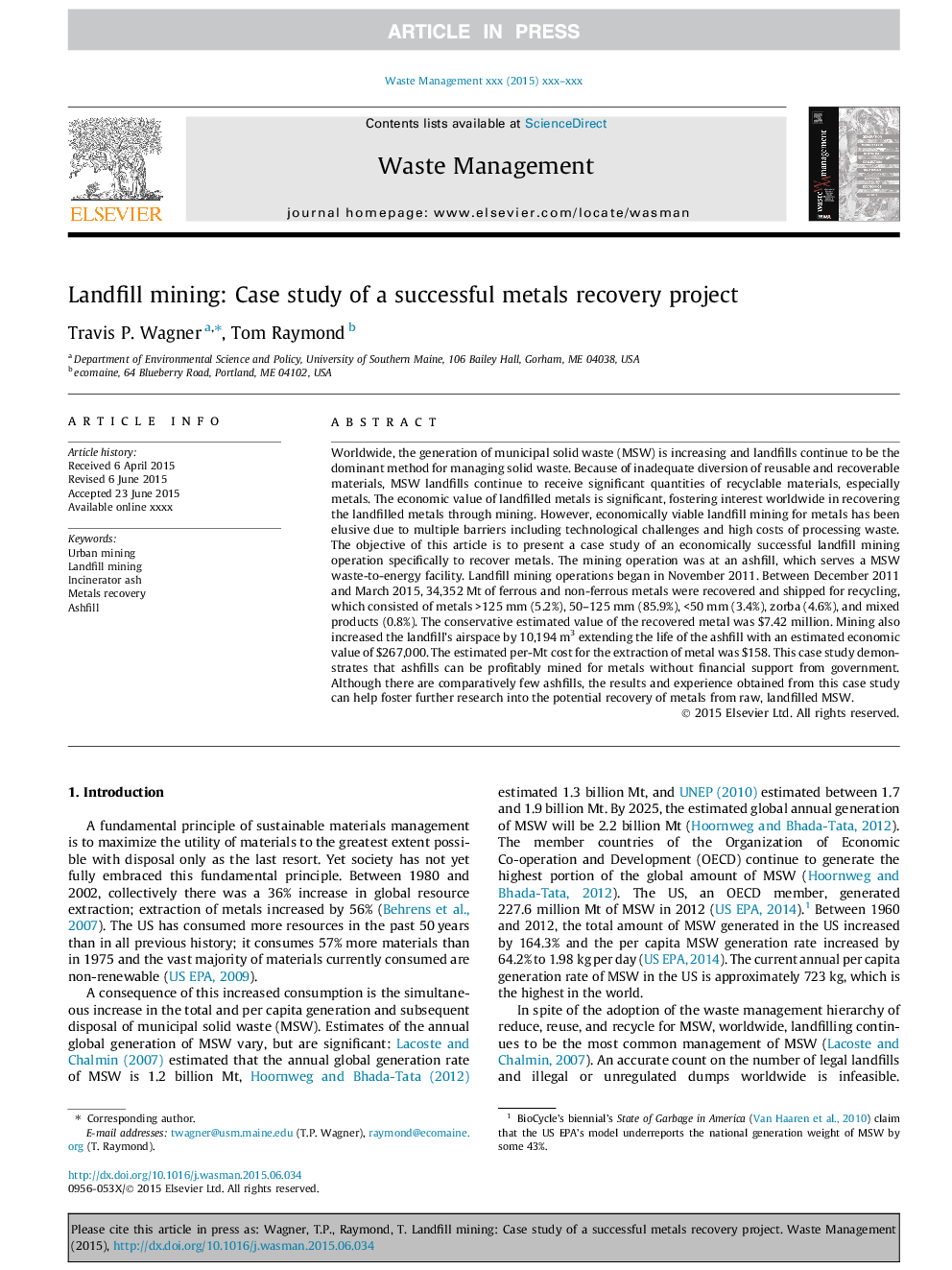| Article ID | Journal | Published Year | Pages | File Type |
|---|---|---|---|---|
| 6354385 | Waste Management | 2015 | 10 Pages |
Abstract
Worldwide, the generation of municipal solid waste (MSW) is increasing and landfills continue to be the dominant method for managing solid waste. Because of inadequate diversion of reusable and recoverable materials, MSW landfills continue to receive significant quantities of recyclable materials, especially metals. The economic value of landfilled metals is significant, fostering interest worldwide in recovering the landfilled metals through mining. However, economically viable landfill mining for metals has been elusive due to multiple barriers including technological challenges and high costs of processing waste. The objective of this article is to present a case study of an economically successful landfill mining operation specifically to recover metals. The mining operation was at an ashfill, which serves a MSW waste-to-energy facility. Landfill mining operations began in November 2011. Between December 2011 and March 2015, 34,352Â Mt of ferrous and non-ferrous metals were recovered and shipped for recycling, which consisted of metals >125Â mm (5.2%), 50-125Â mm (85.9%), <50Â mm (3.4%), zorba (4.6%), and mixed products (0.8%). The conservative estimated value of the recovered metal was $7.42 million. Mining also increased the landfill's airspace by 10,194Â m3 extending the life of the ashfill with an estimated economic value of $267,000. The estimated per-Mt cost for the extraction of metal was $158. This case study demonstrates that ashfills can be profitably mined for metals without financial support from government. Although there are comparatively few ashfills, the results and experience obtained from this case study can help foster further research into the potential recovery of metals from raw, landfilled MSW.
Related Topics
Physical Sciences and Engineering
Earth and Planetary Sciences
Geotechnical Engineering and Engineering Geology
Authors
Travis P. Wagner, Tom Raymond,
